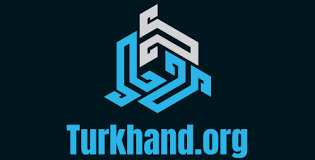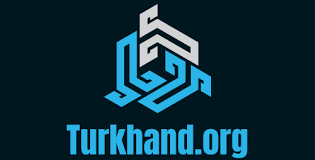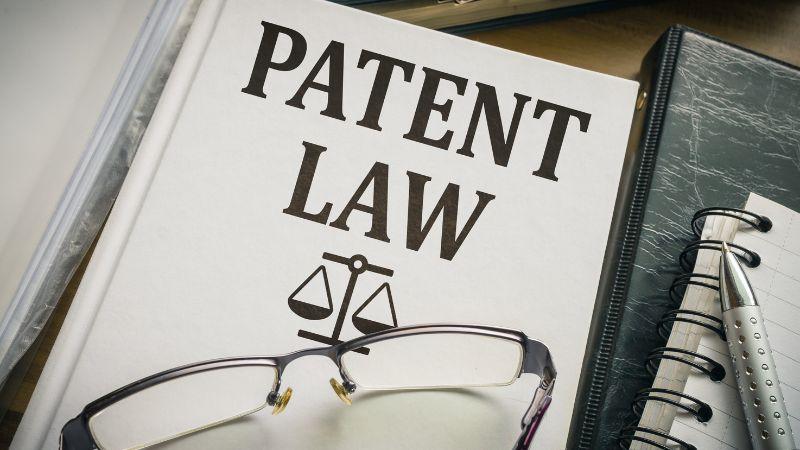What a Patent Is & Why It Matters
A patent grants you the right to exclude others from making, using, selling, offering for sale, or importing your invention for a limited time (in the US, typically 20 years for utility patents) in the United States.
Why is this especially relevant in New York? Because New York is home to many startups, research universities, and innovation hubs (think NYC, Upstate tech corridors), so strong patent protection helps you secure investment, licensing deals, joint development agreements, and market credibility. Also, New York–based inventors often deal with cross-state or global commercialization, so robust US patent coverage is essential.
Before you plunge in, you must confirm:
-
The invention is novel (not already publicly disclosed).
-
It's useful (serves some purpose).
-
It's non-obvious (not an obvious modification of known things).
Now, let's break down the steps and key considerations.
Types of Patents & Which One You'll Use
There are three main patent types in the US, and choosing the right type is foundational:
| Patent Type | What It Protects | Term / Duration | Key Notes |
|---|---|---|---|
| Utility Patent | New and useful processes, machines, articles of manufacture, compositions of matter, or improvements thereby | 20 years from earliest effective (non-provisional) filing date | The most common form used by inventors and businesses |
| Design Patent | Novel, ornamental designs for articles of manufacture (appearance rather than function) | 15 years from grant (for applications filed after May 13, 2015) | Doesn't cover function, only aesthetics schmeiserolsen.com +1 |
| Plant Patent | New and asexually reproduced plant varieties | 20 years from filing | Less commonly used, relevant only in horticulture / biotech contexts |
Many inventors first file a provisional application (only for utility/plant types) to secure an early filing date and purchase time (up to 12 months) before filing a formal (non-provisional) application.
Step-by-Step Guide to Patent Filing (for New York Inventors)
Below is a detailed roadmap. I've also included tips I've learned from working with New York inventors — things you won't always see in plain rules.
1. Preliminary Research & Invention Documentation
-
Keep detailed invention records : date-stamped lab notes, drawings, prototypes, revisions, and explanations. This helps later in case of disputes or proving progression.
-
Conduct a prior art search (also called a patent search). Use USPTO tools, Google Patents, WIPO databases, technical journals, academic papers. You want to find whether any similar inventions exist that may block your patent.
-
In New York, you can also consult patent reference libraries (eg tech libraries or university IP centers) to deepen your search.
-
If your idea is still evolving, consider filing a provisional application to mark your “patent pending” status while you refine the details.
2. Decide Whether to Use a Patent Attorney / Agent
You can file pro se (on your own), but patent law is complicated. Many rejections and expensive mistakes happen because of drafting errors, improper claim scope, or missing nuances.
For inventors in New York, hiring a local patent attorney or agent helps because:
-
They understand local business, patent licensing norms, and regional networks.
-
They can better advise you on commercialization strategies in New York markets (eg NYC tech, Upstate manufacturing).
-
They can help you respond to Office Actions (examiners' rejections) more compellingly.
The USPTO maintains a list of registered patent attorneys/agents.
3. Prepare the Application (Non-Provisional / Formal Filing)
Key components of a full (non-provisional) utility patent application include:
-
Specification / Description : detailed write-up of your invention, how it works, embodiments, how to make/use it.
-
Claims : define the legal scope of what you want protected (the trickiest part).
-
Drawings / Figures : clear illustrations, diagrams.
-
Abstract : a brief summary.
-
Oath / Declaration : inventor's declaration.
-
Information Disclosure Statement (IDS) : you must disclose known prior art you are aware of.
-
Required USPTO forms and filing fees .
Make sure your format, margins, numbering, and structure comply with USPTO rules (found in MPEP – Manual of Patent Examining Procedure).
4. Filing with the USPTO
You have multiple routes:
-
Electronic filing via Patent Center (preferred)
-
By mail (less recommended — more delays)
-
Through your patent attorney/agent (who will file electronically on your behalf)
When you file, you pay the basic filing fee , search fee , examination fee , plus possible excess claims or application size fees.
If you qualify as a small entity or micro entity , you may get reduced fees.
Once filed, the USPTO assigns an examiner who reviews your case.
5. Prosecution / Office Actions
This is the back-and-forth process where the examiner may reject some or all claims, request amendments, or ask clarifications.
-
You'll receive Office Actions (usually non-final and, sometimes, final).
-
You (or your attorney) must respond, possibly by narrowing claims, arguing arguments, or submitting new evidence.
-
You may file Appeals if dissent persists.
-
In special cases, you can request expedited examination (eg “Petition to Make Special”) under certain conditions (eg, inventor age, health, or if the invention qualifies under certain tech classes).
6. Allowance, Grant, and Issuance
-
If the examiner finds your application allowable, you'll receive a Notice of Allowance .
-
You pay the issue fee , after which the patent is formally granted .
-
Your granted patent is published, and you get a patent number. The term runs from the filing date (for utility).
7. Maintenance, Enforcement & Commercialization
-
Maintenance fees : For utility patents, you must pay at intervals (eg 3.5, 7.5, 11.5 years in US) to keep your patent in force.
-
Marking your product (“Patent Pending” or patent number) helps inform the public and support damages.
-
Enforcement : If someone infringes your rights (in New York or elsewhere), you may issue cease-and-desist letters, negotiate licensing, or file infringement lawsuits in federal court.
-
Licensing / Assignment : You can license or assign your patent to others as part of business strategy.
-
Monitor competitors and patents in your field, possibly enforcing or challenging.
Table: High-Level Patent Filing Timeline & Key Milestones (US, applicable to NY Inventors)
| Phase | Time Estimate | Key Milestones & Actions |
|---|---|---|
| Pre-filing / Discovery | Weeks to months | Invention documentation, searches, choosing attorney, provisional filing (if applicable) |
| Preparation & Drafting | 1–3 months (or more, depending on complexity) | Specification, claims, drawings, forms |
| Filing & USPTO Receipt | Date of filing | Application filed, serial number assigned, filing date established |
| Initial Review & Examination | 3–12+ months (varies) | Examiner assigned, search, first Office Action |
| Prosecution / Office Action Exchanges | 6–18+ months | Responses, amendments, possible appeals |
| Allowance & Grant | After final resolution | Notice of Allowance, issue fee, patent issued |
| Maintenance Period | Up to life of patent | Pay maintenance/renewal fees, enforce rights |
Keep in mind: some applications (depending on technology or backlog) may take 18–24+ months or more to issue.
Special Tips & New York–Relevant Insights (From My Experience)
-
Local attorney networks matter : I once worked with a New York biotech inventor whose local attorney had strong ties to NYC's startup ecosystem; that helped with licensing introductions and even investor confidence. Choose counsel familiar with your market.
-
Watch public disclosures early : If you present your invention (eg at an NYC tech meetup or publish a paper) before filing, you may jeopardize novelty unless you're within the 12-month US grace period (but many countries don't allow grace periods). Always file first before public disclosure.
-
New USPTO rules & AI disclosure : The USPTO has been urging transparency about AI's role in invention and disclosure. Be careful if AI tools contributed — disclose appropriately.
-
Strategic use of “Petition to Make Special” : If your invention qualifies (eg important public interest, inventor age/health), this can get your application fast-tracked, which may matter in competitive New York markets.
-
Due diligence on freedom-to-operate (FTO) : Especially in dense innovation areas in New York (eg electronics, biotech), beyond your internal search, hiring an FTO analysis (to see whether your invention unintentionally infringes others) is wise.
-
Budget for “extras” : Many inventors under-budget: office action responses, amendments, appeal fees, translation costs, maintenance, licensing costs — these add up fast.
-
Leverage New York resources : Universities (Columbia, NYU, Cornell, etc.) often have tech transfer offices and IP clinics. Sometimes you can get pro bono help, advice, or collaboration. Also connect with New York incubators, IP groups, and inventor associations for support.
Costs of Patent Filing in New York
One of the first questions inventors asked me was: “How much does it really cost to file a patent in New York?” While USPTO fees are standardized nationally, your overall cost depends on attorney fees, complexity, and whether you qualify for discounts.
USPTO Fee Structure (Utility Patents)
| Fee Type | Standard Entity | Small Entity (50% discount) | Micro Entity (75% discount) |
|---|---|---|---|
| Filing, Search & Examination | ~$1,820 | ~$910 | ~$455 |
| Issue Fee | $1,200 | $600 | $300 |
| Maintenance (3.5 yrs) | $2,000 | $1,000 | $500 |
| Maintenance (7.5 yrs) | $3,760 | $1,880 | $940 |
| Maintenance (11.5 yrs) | $7,700 | $3,850 | $1,925 |
(Source: USPTO Fee Schedule )
Attorney Costs
In New York, attorney fees are usually higher than national averages due to demand and cost of living. On average:
-
Provisional patent application: $1,500 – $3,500
-
Non-provisional utility patent: $7,500 – $15,000 (complex biotech/software cases can exceed $20,000)
-
Office action responses: $1,500 – $4,000 per round
Tips From Experience
I've seen inventors in NYC underestimate the “hidden costs” of amendments, appeals, and drawings. Always budget an extra 25–30% over the base filing estimates to avoid funding gaps.
Common Mistakes Inventors in New York Make (and How to Avoid Them)
Even with strong inventions, many applications fail or get delayed because of preventable errors.
1. Disclosing Too Early
Pitching to investors or demoing at NYC startup events before filing can cost you novelty. File a provisional at minimum before public exposure.
2. Poorly Written Claims
Claims define your legal protection. I've seen inventors draft claims so narrow they were easily bypassed by competitors. A patent attorney ensures claims are both broad (to cover variants) and defensible (to withstand examiner scrutiny).
3. Ignoring Prior Art
Skipping a proper prior art search often results in wasted time and money. USPTO examiners will find the prior art anyway — it's smarter if you uncover it first.
4. Not Considering Global Protection
Many New York inventors focus only on the US but miss opportunities abroad. If you plan to commercialize internationally, consider the Patent Cooperation Treaty (PCT) route to secure priority abroad.
5. Missing Deadlines
USPTO deadlines are strict. I once advised a startup that almost lost rights because they missed the 12-month window to convert their provisional. Create a clear calendar system with reminders.
Local New York Resources for Patent Filing Support
While the USPTO is federal, New York inventors have access to excellent local resources:
-
USPTO Patent & Trademark Resource Centers (PTRCs):
New York Public Library (NYC) and other regional libraries offer free access to patent databases and staff guidance. -
Universities & Tech Transfer Offices:
Columbia, NYU, Cornell Tech, and SUNY all have IP offices that help inventors and startups with patenting and licensing. -
NYC Economic Development Initiatives:
Programs like NYC Innovation Hot Spots and incubators often provide legal/IP support to early-stage companies. -
New York State Bar Association (NYSBA):
Has an Intellectual Property Law Section where you can connect with specialized attorneys. -
Pro Bono Programs:
The USPTO's Patent Pro Bono Program partners with organizations in New York to assist low-income inventors.
Strategic Considerations for Patent Filing in New York
Beyond filing mechanics, here's what I've seen most matter for inventors in New York:
-
Align Patent With Business Goals
Don't file just for the sake of having a patent. File strategic — ask: Will this protect core tech? Attract investors? Open licensing opportunities? -
Leverage the “Patent Pending” Label
Even with just a provisional, “Patent Pending” adds credibility in NYC pitch competitions, accelerators, and investor meetings. -
Consider Fast-Track Options
-
Track One Prioritized Examination : Cuts wait time to ~12 months for an extra fee.
-
Petition to Make Special: Useful if you're a senior inventor or the invention has environmental/energy/health relevance.
-
-
Build an IP Portfolio, Not Just One Patent
Many successful New York startups file multiple related patents (continuations, divisions) to create a defensive moat.
Conclusion:
Filing a patent in New York is more than just submitting paperwork to the USPTO — it's about securing your innovation in one of the world's most competitive markets. From understanding the right type of patent to preparing airtight claims, to navigating office actions and maintenance, each step requires both precision and strategy. Whether you are a solo inventor, a startup founder, or part of a research institution, treating your patent as a business asset is key to long-term success.
At Akhildev IPR and Research Services, we specialize in guiding inventors and businesses through every stage of the patent process — from drafting and filing to prosecution and enforcement. With our expertise and hands-on approach, we ensure your intellectual property is not only protected but also strategically positioned to help you grow, attract investors, and compete effectively. If you're looking to file a patent in New York with confidence, our team is here to make the process seamless and successful.



